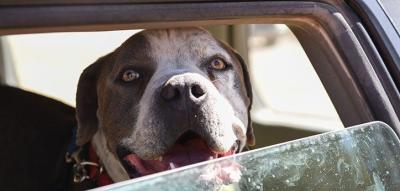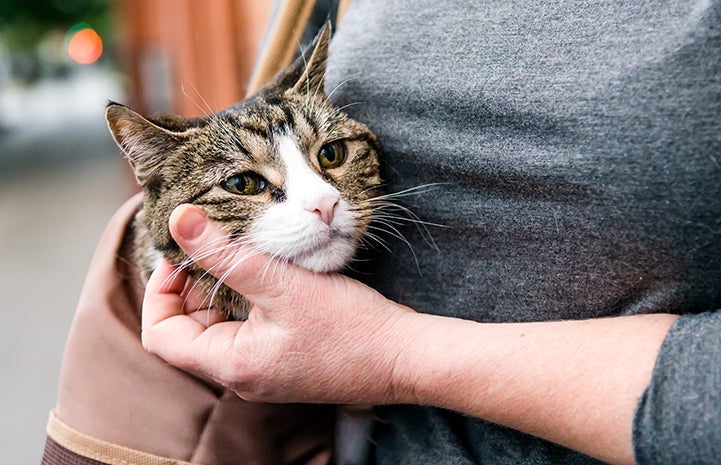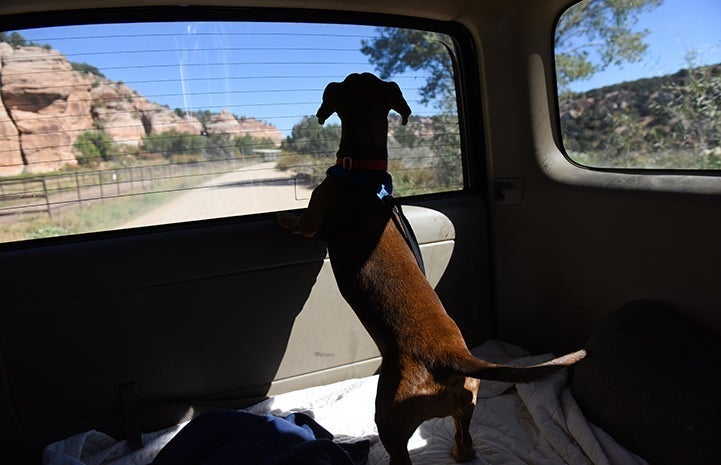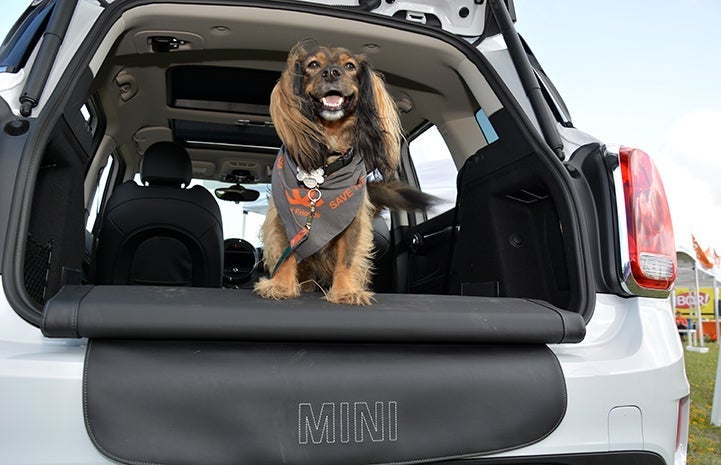
Traveling With Pets: Tips for a Pet-Friendly Vacation
Are you thinking of traveling with pets? Whatever way you travel, you'll need to plan ahead for a successful pet-friendly vacation. The following are some tips for driving and flying with dogs and cats — plus a pet first-aid kit to pack for your trip.
What is the best way to travel with pets?
A road trip with your cat, flying with your dog — the best way to travel with pets comes down to the individual needs of you and your animal. For instance, some pets are comfortable with long road trips while others get carsick. And some might find travel too stressful altogether and would do best being left at home with a pet sitter. Many cats, for instance, often prefer to stay home in a familiar environment. So your ultimate decision about traveling with pets might vary depending on such factors as the mode of travel, your destination, and how long you'll be gone.
Consulting your veterinarian can be helpful when planning a pet-friendly vacation. Some pets don't do well with certain types of travel because of illness, age, injury, or temperament. If this is the case, discuss options with your vet.
If you'll be staying with family or friends during the trip, find out in advance whether your pet is welcome in their home. Likewise, if you'll be staying in a hotel, motel, park, or campground, make sure pets are allowed or kennel facilities are available. Also, check on weight or breed restrictions. Be sure to make a reservation, as many hotels have a limited number of pet-friendly rooms.

Some additional pet travel tips:
- Ensure that your pet is properly identified with a current tag and/or a microchip. In addition to the standard ID tag, your pet's collar should include a special travel tag with information on where you are staying while away from home.
- Carry a current photo of your pet with you to help with identification in case your pet becomes lost.
- Make sure you have proof of rabies vaccination and a current health certificate if you will be crossing state or international borders.
- If you will need to leave your pet alone in the homes of friends or relatives who are not comfortable with your pet being loose when no one is home, make sure your pet is comfortable spending time in a crate and bring the crate on your trip.
- Some exercise, both physical and mental, before you head out on your trip will help your furry friend be more relaxed. There are also many products on the market, such as wraps, sprays, and balms, that can aid in calming your animal.
Road trips with a dog or cat
If your pet is not accustomed to traveling by car and only rarely rides in the car, such as when going to the veterinarian, you can familiarize them with a vehicle by opening the door and letting them sit inside without the car moving. Feed your pet tasty treats to make it an enjoyable experience. Once they're comfortable with being in the car, start going on short outings and then gradually increase the length of the trips.
How to Relieve Dog Car Anxiety and Fear of Car Rides
For your pet-friendly vacation, determine where your pet will ride during the trip. Harnesses, tethers, carriers, and other accessories to secure pets during car travel are highly recommended and are available at most pet stores. If your pet isn't used to being in a crate or carrier, work on crate training first before asking them to ride in the crate in a car for extended periods of time.
Dogs shouldn't ride in the passenger seat if it's equipped with an airbag and should never be allowed to sit on the driver's lap. Dogs also shouldn't ride with their head outside the car window because pieces of dirt or other debris can get in their eyes, ears, and nose, causing injury or infection. If your dog will be riding in a truck bed, they should be confined in a protective kennel that is properly secured.
Home starts with you
Cats should always be confined to a cage or a cat carrier while in a car to make sure they feel secure and protected — and to prevent them from ending up under your feet or in your lap while you are driving. The cat carrier should be secured by a seatbelt.
While on a road trip, try to keep your pet on their regular feeding schedule. Feeding dry food is most convenient, assuming that is already part of your pet’s normal feeding routine. If you use canned food, throw away any unused or uneaten food unless it can be refrigerated. Also, keep a jug of cold water in the vehicle for your pet in case other reliable water sources are not available.
Make sure you have a leash with you for your dog (or cat who knows how to walk on a leash), and plan to stop every couple of hours for exercise and potty breaks. There are many websites and apps that can help you find pet-friendly places to stop. And always remember that a pet should never be left unattended in a car during hot weather, even for short periods of time.

Flying with a dog or cat
Before flying with a dog or cat, consider getting your pet checked by your veterinarian to determine whether they're well enough to handle air travel. Old, sick, or flat-faced dogs and cats (who can be prone to respiratory issues) might have more discomfort on an airplane.
Each airline has its own set of rules for pet air travel, so check the airline’s website or call for information and make arrangements well in advance of your trip. When flying in the cargo area, animals must be in an airline-approved crate. Many airlines allow small dogs and cats to ride under the seat in the cabin in an approved carrier.
Airlines often also have pet air travel rules and regulations regarding:
- Breeds and sizes of dogs allowed
- Number of pets allowed on each flight
- Pets allowed in the main cabin
- Pet health certificates (most airlines require that certificates be issued within 10 days of the departure date)
- Proof of pets’ vaccinations
- Checked kennel charges
Whether your pet travels in the cabin with you or in the baggage compartment, they should be completely comfortable with the kennel or carrier that they'll be traveling in. Trying to escape from a kennel is one of the most common causes of injury to pets traveling by air.
To help reduce the stress on you and your pet, choose the most direct flight to your destination. And it’s a good idea to confirm your flights the day before travel to ensure that there have been no unexpected changes.
Get to the airport early, exercise your pet, personally place them in the crate, and pick up the animal promptly upon arrival at your destination if you have to check your pet as baggage. When boarding the plane, let the flight attendant know that your pet is in the baggage compartment.
Ask your veterinarian for advice on feeding your pet prior to air travel. Air travel for a pet on an almost empty stomach is usually recommended. The age and size of your pet, the time and length of your flight, and your pet’s regular dietary routine will be considered when feeding recommendations are made. Tranquilizers are generally not recommended because of the increased risk of heart or respiratory problems.

Pet first-aid travel kit for travel
Make sure you have a pet first-aid kit in case of emergency or unexpected illness or injury while traveling. Consider including the following items in the kit:
- Pet first-aid book
- Emergency contact list (including phone numbers for your veterinarian, an emergency vet clinic, and a national poison control hotline)
- Your pet’s prescription medications
- Self-adherent wrap
- Gauze roll
- Sterile gauze pads (in various sizes)
- ABD (abdominal) pads
- Elastic bandage wraps
- Antiseptic pads or alcohol wipes
- Antibacterial cream or ointment
- Instant cold packs
- Emergency blanket
- Tweezers
- Blunt scissors
- Exam gloves
- Styptic blood-clotting powder
- Sterile saline syringes (10 ml)
- Cotton balls and swabs
- Hydrogen peroxide (3%)
- Headlamp or flashlight
- Collapsible water bowl
- Basket muzzle (a dog in pain might attempt to bite)
- Sling for carrying medium or large dogs
In addition to the first-aid kit, don’t forget to pack your pet’s favorite foods, toys, and dishes to make them feel “at home” away from home. An extra leash or harness, a towel, and baby wipes can also come in handy.
If you have pet insurance, contact the company to find out how to handle emergencies when away from home. Ask your veterinarian whether they can give you the name of a veterinarian at your vacation destination, or contact the local visitor’s bureau or chamber of commerce for information on local veterinarians and emergency veterinary clinics.
Pay special attention to your pet’s behavior while traveling, especially their eating, drinking, and potty habits. Be on the lookout for any unusual discharge from the nose and eyes, excessive scratching or biting of any body part, abnormal elimination, or excessive water consumption. Contact your veterinarian if you are concerned about any physical or behavioral changes.
